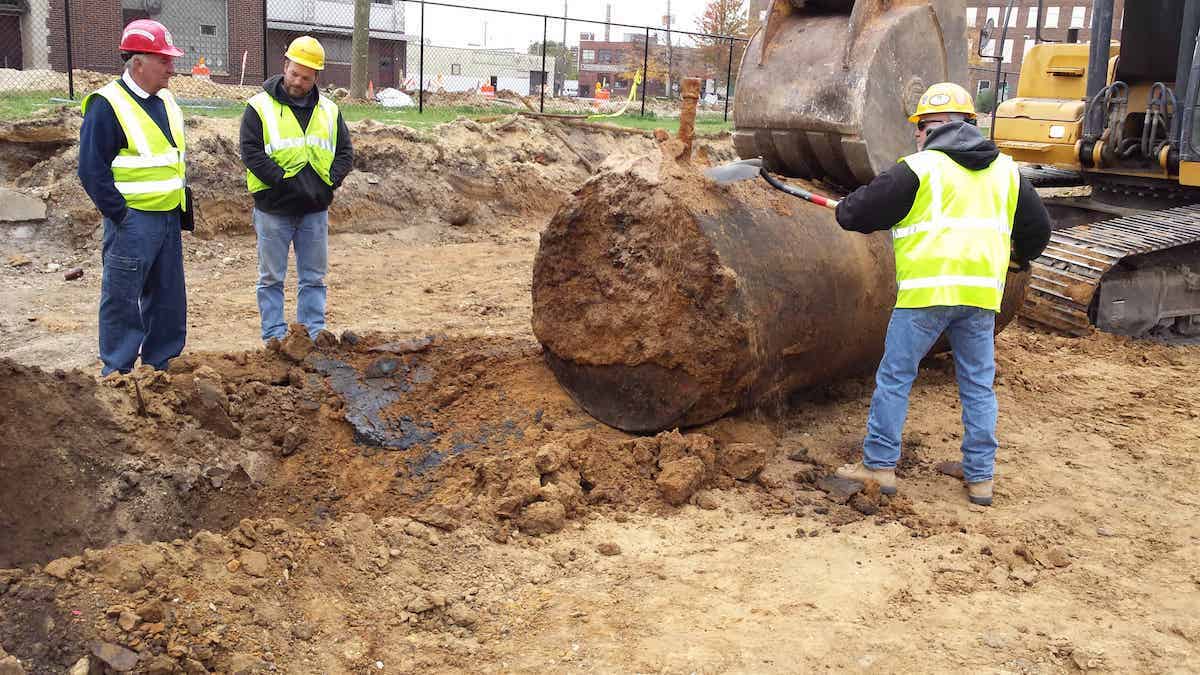Underground storage tank remediation: cleaning up soil and groundwater
As of March 2022, more than 566,000 underground storage tank (UST) releases were confirmed across the United States. Leakage from USTs often contains hazardous substances like toluene, benzene, ethanol, lead scavengers and methyl tert-butyl ether, which can contaminate soil, groundwater, surface water and air if left untreated. Such toxic releases can also make groundwater unsafe or unpleasant to drink, create potential fire and explosive hazards, and cause long-term health effects.
To protect the health of community members and the environment, federal regulations require states to clean up all UST release sites — except those on tribal lands, for which the U.S. Environmental Protection Agency (EPA) bears responsibility. The extent of contamination helps determine costs and cleanup methods for each site. Remediation is often easier and less expensive at sites where groundwater remains unaffected and pollution is isolated to the soil.
In contrast, sites with severe groundwater contamination may require extensive remediation efforts that cost millions of dollars and years of cleanup. Below, we discuss some underground storage tank remediation techniques for cleaning up soil and groundwater and why you need an environmental expert to help ensure successful remediation project outcomes.
Underground storage tank remediation techniques
The chosen UST remediation techniques depend on several factors, including the intended end-use of contaminated property and the client's timeline. Site conditions, like the size of the affected area, soil type (permeability and porosity of material) and hydraulic conductivity of groundwater, also determine the efficacy and feasibility of remediation techniques. While UST settings can differ profoundly, some common underground storage tank remediation techniques for soil and groundwater include:
- Soil excavation and off-site disposal. When cleanup crews identify soil contamination outside the UST footprint, they excavate contaminated soil, stockpile it and cover it with heavy plastic sheets. The affected soil is transported to an approved disposal facility, and the crew backfills and levels the excavated area with certified clean material.
- Soil vapor extraction. Mostly implemented in-situ (on-site), soil vapor extraction is designed to remediate the unsaturated zone soil — the portion of the soil subsurface above the groundwater table. Applying a vacuum to the soil facilitates controlled air movement and removes volatile and semi-volatile organic contaminants from the soil.
- Air sparging. This in-situ treatment technology uses injected air to remove halogenated and non-halogenated volatile organic compounds released from leaking USTs. Air sparging is particularly viable to remove contaminants from the saturated zone — the ground immediately below the water table.
- Bioremediation/bioventing. In-situ bioremediation, better known as bioventing, is most effective at UST sites with coarse-grained soil like sand and gravel. This remediation method injects oxygen into contaminated soil and stimulates aerobic biodegradation of organic contaminants. Bioventing can treat large volumes of contaminated soil and is also cost-effective.
- In-situ chemical oxidation. In-situ chemical oxidation is used to treat contaminated soil and groundwater in the source area where contaminants were released. When injected or added to the contaminated soil and groundwater, chemical oxidants such as persulfate, permanganate, ozone and hydrogen peroxide destroy contaminants and produce harmless byproducts.
- Dual-phase extraction. This in-situ remediation technique uses pumps to remove various combinations of contaminated groundwater, petroleum products and hydrocarbon vapors from the subsurface of a UST site. Dual-phase extraction systems are particularly effective in reducing petroleum hydrocarbon concentrations in saturated and unsaturated subsurface zones.
- Groundwater pump-and-treat systems. As a common cleanup method for groundwater, pump-and-treat is typically used once the contamination source has been treated or removed from the UST site. Extraction wells pump contaminated groundwater to an above-ground treatment system for contaminant removal. Depending on the remediation level, the treated groundwater may be pumped back underground, distributed over the ground surface or discharged for disposal.
Successful remediation of a UST release site is determined by whether the end goal for the property has been achieved. Municipalities and developers should also consider adopting remediation techniques ike the EPA's Best Management Practices to minimize the environmental footprint of such cleanups and encourage green remediation of UST sites.
Best practices/processes for restoring a site after UST removal
The EPA's Best Management Practices provide guidelines for consultants and government agencies to evaluate and minimize the environmental impact of remediation. The selection and implementation of Best Management Practices are based on site-specific conditions and project requirements. In terms of cost-effectiveness, there is usually overlap between EPA-recommended Best Management Practices and common underground storage tank remediation strategies. Following remediation, best practices include complying with the conditions of a No Further Remediation letter (if received) and minimizing effects on human health and safety (if applicable).
The best practice for municipalities and developers is partnering with an environmental consultant on-site during UST removal to collect soil and groundwater samples. This allows them to develop the most effective remediation strategy, reduce costs and help ensure the best project outcomes.
Why you need an environmental consultant throughout the UST remediation process
An environmental consultant can best determine when a site requires underground storage tank remediation and can guide you through the process. The consultants at Fehr Graham work closely with state EPA authorities in Illinois, Iowa, Wisconsin and other states on several Leaking Underground Storage Tank (LUST) projects. Our team of environmental professionals provides early guidance to ensure all clients comply with EPA reporting and sampling requirements in UST sites. We also help community leaders secure local, state and federal funding to help safely remove USTs and successfully remediate contaminated sites.
To learn more about how Fehr Graham can help you with underground storage tank remediation, contact us or give us a call at 920.453.0700.
 |
Environmental Health and Safety Specialist Cole Lewis is a Wisconsin-certified lead and asbestos inspector. He provides regulatory compliance consulting, safety training, and property assessment and remediation. He also helps clients with Stormwater Pollution Prevention Program requirements and Spill Prevention, Control and Countermeasure plans. Contact him at |
Collaborative, Insightful, Results-Driven Solutions
Fehr Graham provides innovative engineering and environmental solutions to help improve the lives and communities of our customers.

